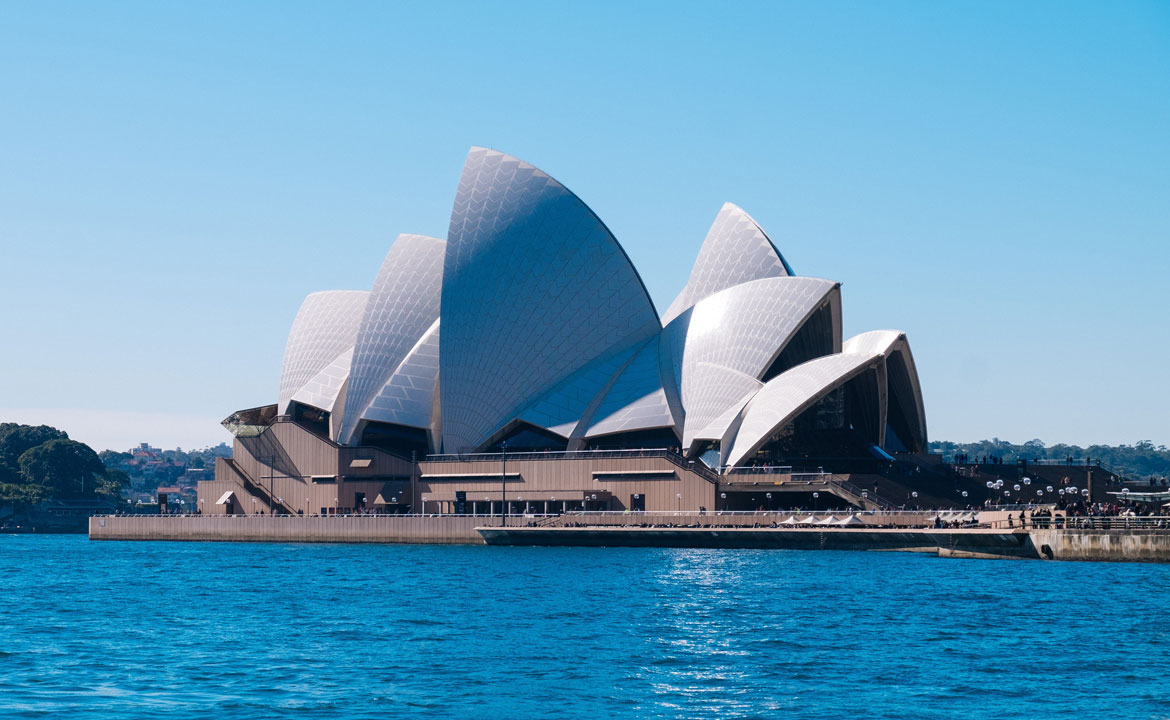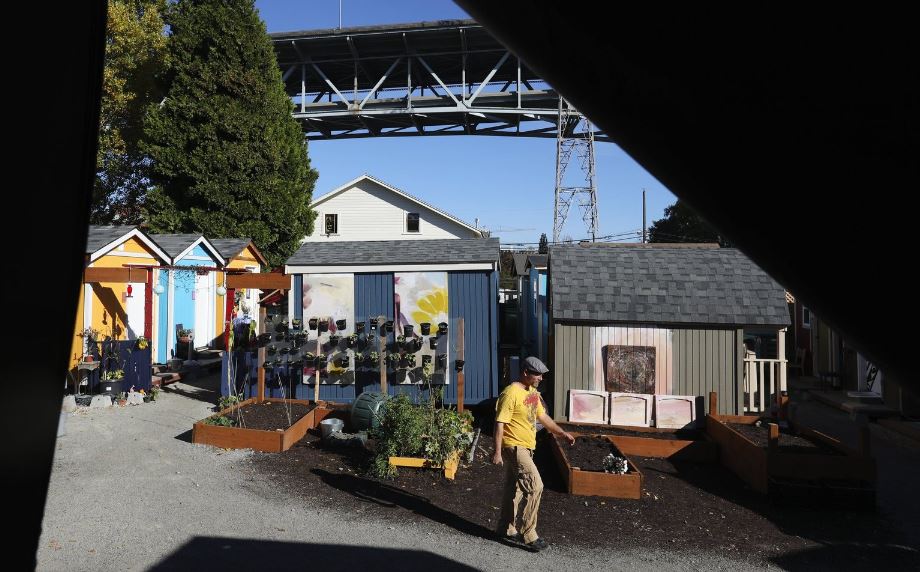Cities and Thrones and Powers, Stand in Time’s eye…” – Rudyard Kipling The great cities like Mohenjo-Daro, Indraprastha, Babylon, and the great architectural building like the Pentagon (the world’s largest office building by floor area), World Trade Centre (the twin 110-story towers), are all gone, and new cities and architecture are growing up in their stead. With the passing of time, the concept and patterns of architectural industry is rapidly changing. Every era has its own style and ideology which are reflected onto the architecture developed and designed in that era. When the world moved into the 21st century, architecture industry reached new heights. With dramatic innovations in engineering and technology, the modern era is witnessing growing numbers of skyscrapers and wonderful architectures around the world. Architectural Evangelist discovers seven iconic modern architectures which beguile tourists around the world. Drivers of the Change During the Middle Ages, architects and engineers realized the possibility of constructing building with dazzling height. But, poor technology could not transform their imaginative ideas into reality. The continuous advancements in technology and software in modern era are transferring their long-desired visions into reality. Dramatic improvements in window systems and photovoltaic system have made architects and designers to build “Net Zero Energy” buildings with spectacular heights. 3D-4D Building Information Modeling has brought a paradigm shift in the AEC industry. It helps not only to design a home building, but provides an end-to-end construction process, addressing the constructability, coordinating the process, and identifying clashes much before the actual construction begins. The drivers of changes are the followings: Economic Development Advancement in Technology and Engineering Connotation of Pride and Achievement Stiff Competition The Skyscraper Race Sign of Power Creativity of Modern Architects Burj Khalifa (Burj Dubai): An Ambitious Move Formerly known as Burj Dubai, the tallest building in the world with incredible height of 828 m (2,717 ft), Burj Khalifa is a part of the 2 km2 flagship development called “Downtown Burj Khalifa”. Adrian Smith of Skidmore designed the building, while Bill Baker engineered the project. George Efstathiou was the Chief Architect for the project. The architecture and engineering tasks were completed by Skidmore, Owings, and Merrill (SOM) of Chicago. The building was built by South Korean company Samsung C&T, along with the Belgian group Besix and Arabtec from the UAE. The gigantic and multibillion-dollar skyscraper, Burj Dubai possessed World’s longest-traveling elevator measuring of 1,640 feet, traveled in two minutes unbelievably. Containing 5 million square feet of floor space, Burj Dubai is built on a “Y” footprint with three wings, each buttressing the others. At the center remains a six-sided concrete hub tying it all together. The outside temperature at the top floor can be as much as 15 degrees cooler than at ground level. If you want to cool off yourself during the scorching summer days in Dubai, book your flight and fly to Burj Dubai. Sydney Opera House: A Symbol of Creativity and Innovation Sydney Opera House is “one of the great iconic buildings of the 20th century”. A great urban sculpture set in a remarkable waterscape, Sydney Opera House is a prominent multi-venue performing arts centre at the tip of a peninsula projecting into Sydney Harbour. Designed by the Pritzker Prize (2003) winner Danish architect Jorn Utzon, Sydney Opera house comprises three groups of interlocking vaulted ‘shells’ which roof two main performance halls and a restaurant. As one of the busiest performing arts centers in the world, it provides over 1,500 artistic and cultural performances for all ages from the educational to the experimental attended by near about 1.2 million annually. It is one of the most popular visitor attractions in Australia, attracting more than 7 million tourist pilgrimages each year. The Opera House which was originally estimated to be completed on 26th January, 1963 was formally completed in 1973, thus being ten years late and surpassing the estimated budget by more than fourteen times. The Crystal: The Dawn of the Crystal Age With an aim to highlight the Royal Ontario Museum’s (ROM) role as a Toronto focal point, the $270 million controversial renovation project Michael Lee-Chin Crystal marked the beginning of a new chapter for Toronto while it was formally opened on 2nd June, 2007. Polish-born U.S. Architect Daniel Libeskind put his thought onto the paper while attending a family wedding at the Royal Ontario Museum. Met with both scorn and adoration, the Crystal comprises five interlocking, self-supporting prismatic structures that interface with, but are not attached to, the original ROM. 25 percent of the exterior of the building is covered with glass and the rest 75 percent is covered with extruded-brushed, aluminum cladding strips in a warm silver color. Exquisitely designed steel beams ranging from 1 to 25 meters in length are placed one by one to their specific angle, creating complex angle joints and sloped walls. The Guggenheim Museum Bilbao: Changing the Concept about Museum Designed by Canadian-American architect Frank Gehry, built by Ferrovial, and located in Bilbao, Spain, The Guggenheim Museum Bilbao is one of the world’s most spectacular buildings in the style of Deconstructivism. Computer simulations technology played an important role while structuring the building, making it feasible to develop shapes and blocks. Computer Aided Three Dimensional Interactive Application (CATIA) and 3D visualization helped the architectural designers and constructors to identify spatial problems and design conflict at the early stages of design and development. Every part of the building reflects the Gehry style. Situated upon the Nervion River and resembled like a Ship, the Guggenheim Museum challenges our assumptions about the connection between art, architecture and collecting. Most interestingly, this is one of the rare buildings which were constructed on time and budget. With close to ninety exhibitions and over ten million visitors to its credit, the museum has changed the way the world thinks about museums. The Cumulus: Experience the Technology According to the designer Juergen H Mayer, “Communicating between ground and sky, the Danfoss Project can be seen as landscape formations”. A new addition to the 5.5 hectar science museum park Danfoss Universe, the Cumulus is a spectacular building, having irregular cloud-like roofscape, curves and angles. It appears as a bite taken out of a cloud. The interior of the building is designed in black and white, with the exception of stairs and exhibition props which are covered with red cushions. The Cumulus opening exhibition “Bitland” offers visitors of all ages the chance to experience the latest digital technology. Interaction is visualized via two large projection walls. At Cumulus, you can play with technology, fight a big robot and create your own animation movie. Petronas Twin Towers: The Towers that Inspire Designed by Argentine architect César Pelli, the 88-floor Petronas Towers were the tallest buildings (1998 to 2004) in the world until Taipei 101 was completed in 2004. However, the twin towers are still the tallest building in the world. Due to the huge cost of importing steel, the towers were constructed on a cheaper radical design of high-strength reinforced concrete, with a steel and glass façade designed to resemble motifs found in Islamic art. The Tower 1 was built by a Japanese consortium led by the Hazama Corporation while Tower 2 was built by South Korean contractors Samsung C&T and Kukdong Engineering & Construction. While Tower 1 is fully occupied by Petronas and a number of its subsidiaries, Tower 2 is occupied by number of famous companies including Accenture, Boeing, IBM, McKinsey & Co, TCS, HCL Technologies, Microsoft, Reuters, and etc. Empire State Building: Enlightening the World with Light One of the most striking attractions of the Empire State Building is its frequently changing lighting systems atop the building. As a focal point for displays, important incidents, and promotions, the Tower Lights just might surprise you with how often they change! Secondly, the building was the center of a skyscraper race between Walter Chrysler (Chrysler Corp) and John Jakob Raskob (General Motors) to see who could build the tallest building first. The Empire State Building, named after the nick name of New York – ‘The Empire State’, is a 102-story landmark in New York City. It stood as the world’s tallest building (1,250 feet) from 1931 to 1973 until the construction of the World Trade Center’s North Tower was completed in 1972. The building was designed by William F. Lamb from Shreve, Lamb and Harmon, which develop the building drawings in two weeks. It took only one year and 45 days to complete the masonry, significantly ahead of schedule and under budget. Built during the Great Depression, the cost of the building was only $40,948,900 including the cost of land (much lesser than the $50 million estimated tag). Conclusion What do an office building, a mausoleum, a museum, an opera house, and a skyscraper have in common? They’re all architectural masterpieces that beautify the skylines throughout the world, alluring international tourists. The above mentioned architectures are the signatures of the modern era. Little known about the technology and methodologies used, there are no suspicions that these architectural wonders are technologically superior and advanced. With the passing of time and advancements in technology and engineering, there would be more architectural wonders in near future.,





